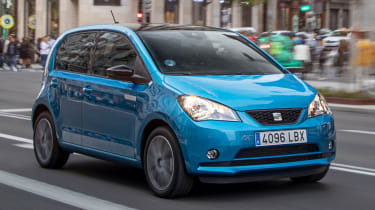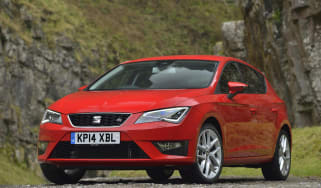SEAT Mii electric review (2020-2021)
"The SEAT Mii electric shares much with the Volkswagen e-up! but offers buyers some extra style and better value"
Pros
- Impressively spacious
- Good fun to drive
- Cheap entry-level EV
Cons
- It's slow
- Some suspect interior quality
- Design is starting to feel its age
The SEAT Mii electric is one of the first city cars to embrace the switchover to electric power, after being solely available with a 1.0-litre petrol engine for several years. The city car market is changing because of stringent emissions legislation and manufacturers are either giving up on the segment or making their cars electric.
The SEAT Mii has always shared its underpinnings with the Volkswagen up! and Skoda Citigo, for cost saving reasons. The Volkswagen e-up! was the first of the trio to undergo electrification fairly early in its production life, but now the Mii and Citigo feature the revised e-Up!’s electric powertrain.
There’s only one electric powertrain on offer, namely a 61kW (82bhp) electric motor driven by a 36.8kWh battery. Performance isn’t as exhilarating as we’ve come to expect from electric cars generally, as 0-62mph takes 12.3 seconds.
The batteries on the SEAT Mii electric add on around 300kg, which makes both the car itself and the steering feel heavier than you might expect in a car of the Mii’s size. You might be willing to overlook that when you consider that the Mii electric is one of the least expensive electric cars on sale.
In 2011, the original Mii scored the full five-star Euro NCAP crash-test rating in a class where quite a few rivals have four stars. However, when retested in late 2019 under the more stringent rules, the Mii electric scored three stars.
Every Mii electric gets Safety Assist, a system that can automatically perform an emergency stop if a collision is deemed imminent at speeds between 3 and 19mph, along with multiple airbags, anti-lock brakes, traction control and stability control. You’ll also find ISOFIX mounting points in the back for child seats, along with a system to alert you if a tyre loses air pressure.


















